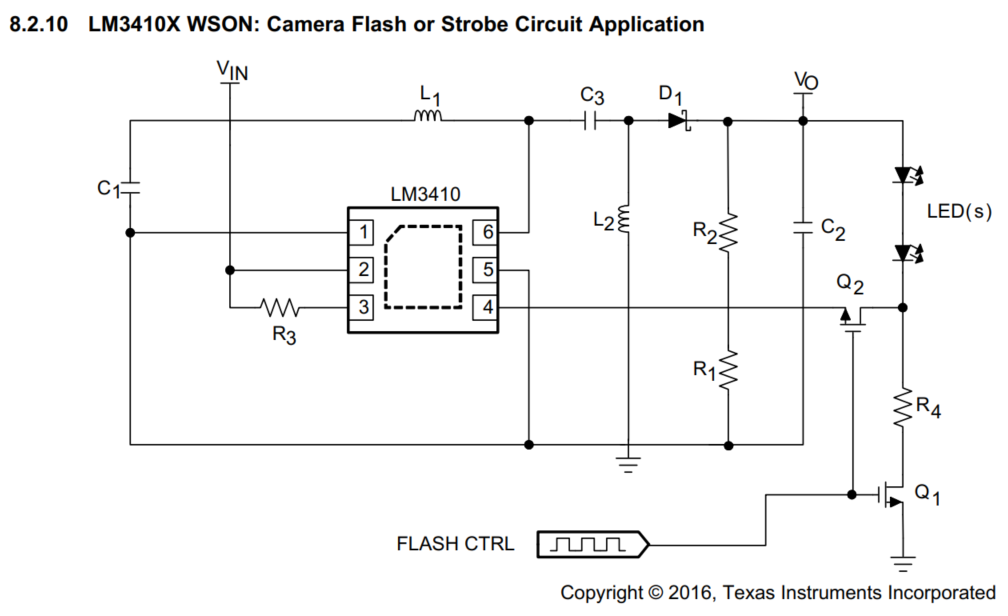Hi all,
I met some problems when using LM3410 in my design.
My design parameters:
Vin=5V;
Iin=300mA;
Iled=2.5A;
Vout=6.2V
and my schematic shows as below:
My question:
1 Should not R2 and R1 be connected to FB PIN? Is R1 1Ω or 1KΩ?
2 The LED current is designed as 1.5A,but because of the resistance of Q1, the current value should be less than Vfb/R4=1.27A,isn't it?
3 When SEPIC Converter is not necessary,can the part be deleted?
and my design as follow:
Q4:Please guide me for N-mos selection.Because of the resistance of U20,How to make sure the current of LEDs is up to 2.5A?
Q5:Please guide me for capacitance selection and Vout setting.Flash pulse width is 1ms,the energy of charge pump capacitance is 1/2*C*U*U(=0.5*C*6.2*6.2)
LED flash energy cost:2pcs*VF*Iled*T=2*3V*2.5mA*1ms=15mJ;The capacity of charge pump capacitance should not be less than 780UF(Energy loss is not considered).
Q6:Are there any other questions or suggestions?Thank you very much.



